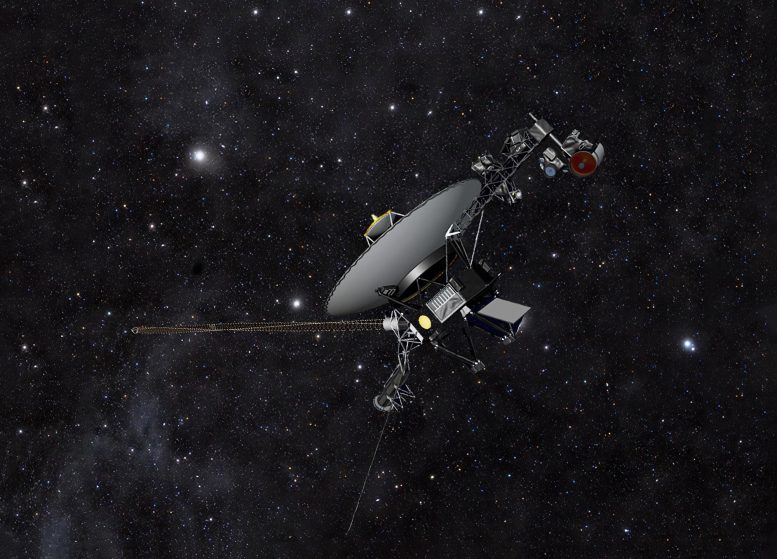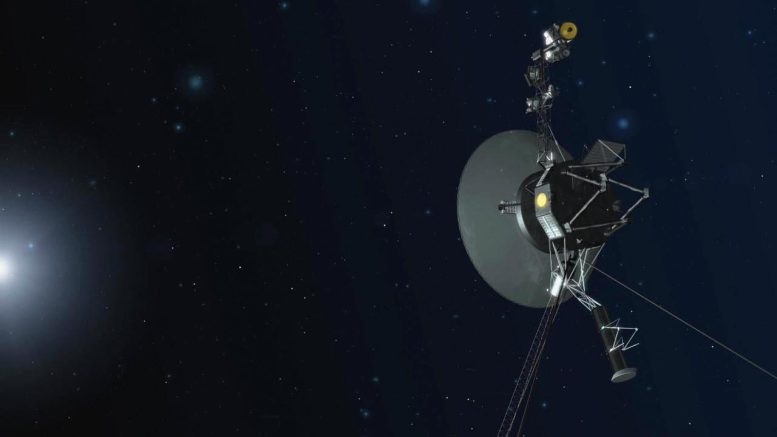
Update August 4: NASA’s facility in Australia successfully reoriented Voyager 2, receiving science and telemetry data confirming the spacecraft’s normal operation and expected trajectory.
Update August 1: A faint signal from Voyager 2 has been detected by NASA’s DSN, indicating the spacecraft is still operational and on course. NASA will try to command the spacecraft to reorient its antenna earlier than the scheduled October reset, potentially reestablishing communication sooner.
NASA’s Voyager 2 has lost communication with Earth due to an unintentional shift in its antenna direction. The next programmed orientation adjustment on October 15 is expected to restore communication, while Voyager 1 continues to operate as usual.
A series of scheduled commands directed at NASA’s Voyager 2 spacecraft on July 21 led to an unintentional change in antenna direction. Consequently, the antenna moved 2 degrees off course from Earth, causing the spacecraft to lose its ability to receive commands or transmit data back to our planet.
The spacecraft, currently over 12.3 billion miles (19.9 billion kilometers) away from Earth, has consequently suffered a disruption in its communication with NASA’s Deep Space Network (DSN) ground antennas. Because of the misalignment, the spacecraft is unable to send data to the DSN and it’s not receiving commands from ground controllers.
Voyager 2 is programmed to adjust its orientation multiple times throughout the year to keep its antenna aligned with Earth. The next scheduled adjustment is set for October 15, which is anticipated to re-establish communication. Despite the interruption, the mission team expects Voyager 2 to stay on its planned trajectory throughout this quiet period.
In contrast, Voyager 1, nearly 15 billion miles (24 billion kilometers) from Earth, is continuing its operations without any issues.

Voyager 1 and Voyager 2 are twin spacecraft that were launched by NASA in 1977 with the primary goal of exploring the outer solar system. Despite being over four decades old, they remain operational and continue to return valuable scientific data.
Voyager 1 was launched on September 5, 1977, and its mission was to fly by Jupiter and Saturn. During its journey, Voyager 1 provided detailed images and data of these gas giants and their moons, including the discovery of active volcanoes on Jupiter’s moon Io and intricate ring systems around Saturn. In 2012, Voyager 1 made history by becoming the first spacecraft to enter interstellar space, the region of space beyond our solar system.
Voyager 2, launched on August 20, 1977, is the only spacecraft to have flown by all four outer planets — Jupiter, Saturn, Uranus, and Neptune. It revealed important details about these planets and their moons, including the discovery of Neptune’s Great Dark Spot and Uranus’s off-center magnetic field.
Both spacecraft carry a “Golden Record,” which is a phonograph record containing sounds and images selected to portray the diversity of life and culture on Earth. These records are intended to communicate the story of our world to any extraterrestrial intelligence that might find them.
A division of Caltech in Pasadena, NASA’s Jet Propulsion Laboratory built and operates the Voyager spacecraft. The Voyager missions are a part of the NASA Heliophysics System Observatory, sponsored by the Heliophysics Division of the Science Mission Directorate in Washington.
Never miss a breakthrough: Join the SciTechDaily newsletter.
2 Comments
Now that voyager 1 has entered interstellar space beyond solar system, aliens may easily spot it outside solar system.
If it continues to move forward, sooner or later it may reach in the communication range of other intelligent life from some life supporting planet. They may try to communicate Earth.
The nearest star where aliens might be hanging out is Alpha Centauri which is 4.2 light years or 40,000, billion kilometers away; which means Voyager 1 is a whole 0.037% of the way there.
Don’t hold your breath.